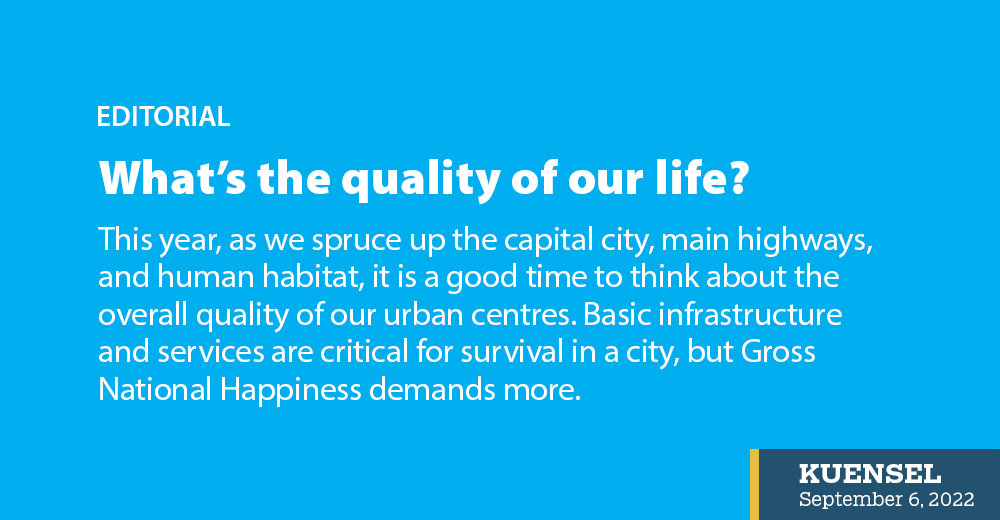This year, as we spruce up the capital city, main highways, and human habitat, it is a good time to think about the overall quality of our urban centres. Basic infrastructure and services are critical for survival in a city, but Gross National Happiness demands more.
In terms of broad aesthetics, the façade of our traditional architecture has given our towns an identity, although a superficial one. But it will always be a tussle as property owners try to build as high as possible. And our decision makers will need the resilience to withstand new pressures, including political pressure, as our political and socio-economic priorities change. If our hotels get bigger than our lhakhangs and dzongs and perch atop every hill, it will be the sad end of the Bhutanese landscape.
Our habitat is rapidly changing from pristine villages to concrete towns and an estimated 200,000 Bhutanese people are already trying to live an urban life. If we miss the greens and other colours of foliage that we had in the rural setting, it is sad. But if we stop caring about it altogether, that will be tragic. As it is, foliage is not a priority in our towns.
An even bigger irony is that we are breathing increasingly polluted air. We had 123,592 motor vehicles on our roads as of July this year and add to that a large variety of machines, all throwing up visible fumes and invisible gases into the air. If current trends are not stalled or reversed, we will be living in the heart of the most pristine country, breathing foul or even toxic air.
It is now obvious that a majority of Bhutanese families have been living in two-room apartments with a common toilet. The large space that characterised rural life has been traded for the comforts of city life, as it is represented by the acute shortage of space. What is not known is the psychological and social impact that this is having on us. Children growing up in two rooms will develop differently from those who have a valley to run around in.
Why is a respiratory infection the biggest killer of children? Why is hypertension not a novelty anymore? What is causing an increasing number of mental health issues? The problems are emerging, fast and furious.
We do not need the expertise for some basic conclusions. Parks and libraries, two symbols of a good quality of life, are a major scarcity in our urban centres. But we have thousands of bars.
At this rate, our happiness is taking on a different meaning altogether.


